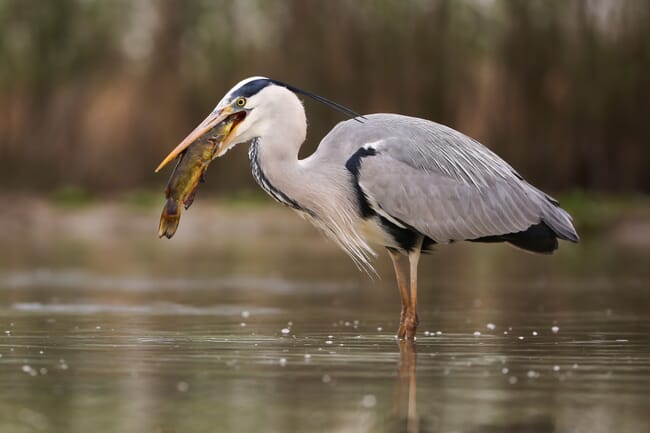
Predatory birds can pose a welfare and biosecurity threat for aquaculture operations.
Piscivorous birds’ diets are mainly based on different species of fish, occasionally complemented by aquatic animals such as crustaceans and molluscs. These birds exercise their feeding activity around both fresh and saline bodies of water.
Predatory birds can cause damage to fish either directly or indirectly. Direct damage occurs when the predator kills or seriously injures the fish, making them unmarketable. Indirect damage is highly variable and includes non-lethal injuries to fish; chronic stress and consequent reduction in fish health and food conversion efficiency; and transfer of pathogens such as bacteria, viruses and parasites. Sometimes they can even physically damage the animals’ enclosures, leading to fish escaping.
Birds that forage on landfills, such as seagulls, can pick up and disseminate pathogenic micro-organisms such as salmonellae and faecal coliforms. The increase in bacterial concentration in reservoirs has been correlated with the number of roosting gulls. Some bacterial species isolated from bird faeces (eg Edwardsiella tarda) have been implicated in severe outbreaks of septicaemia and enteritis in salmonids.
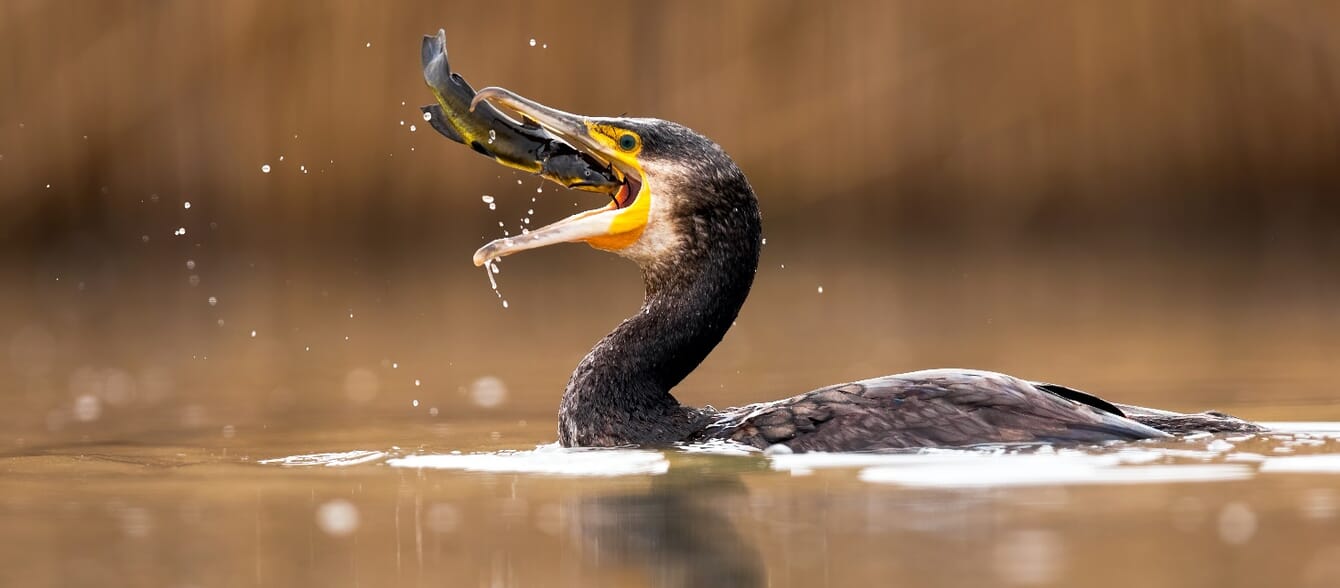
The birds mainly feed on fish that weigh less than 150 g.
The loss of a farm's "disease-free" status due to the introduction of an exotic pathogen by predatory birds is much more significant. The overall damage caused by avian predators to a farmed fish population can vary greatly and be very costly, depending on several factors. Proper knowledge of the negative effects of a given predator on aquaculture sites requires an assessment of the bird population biology, feeding behaviour, aggression, migratory movements and effective predator control measures.
The following fish-eating birds are of special importance because of their economic impact:
Pelicans: feed mainly on fish stocks ready for commercialisation. They also raid fish ponds during harvesting. They catch fish up to 1 kg and effective predation is carried out in fish ponds up to 2 m deep.
Storks, cormorants and herons (white, purple and gray): feed mainly on fish weighing less than 150 g. Herons, in particular, feed on fish that gather under demand feeders or when the fish are weakened by disease.
Seagulls: are present year-round. They injure fish by biting them in an attempt to catch them, in particular during harvesting. Seagulls also peck at sick fry.
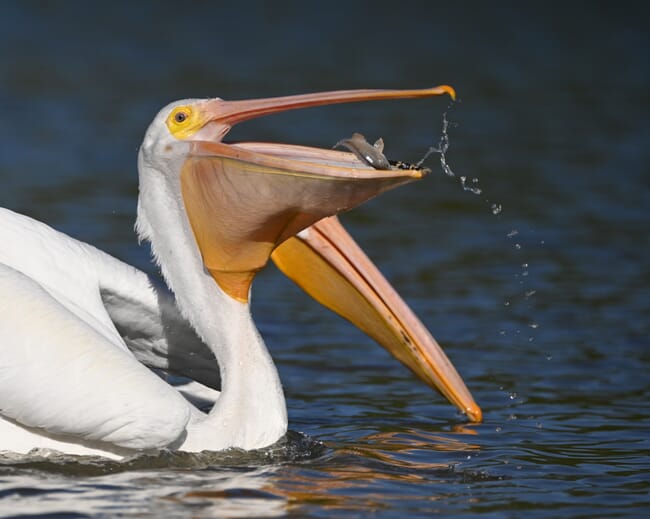
The presence of predatory birds at aquaculture operations can increase biological stress in fish.
The main problems with piscivorous birds in aquaculture:
- Predation not only causes direct losses, but also serious lesions that become portals of secondary infection by pathogens.
- Interference with artificial feeding not only directly affects feed consumption, but also indirectly alters the fish feeding process, due to the concentrations of avian predators around feeding places.
- The spread of infectious fish diseases from one pond to another can be quite rapid.
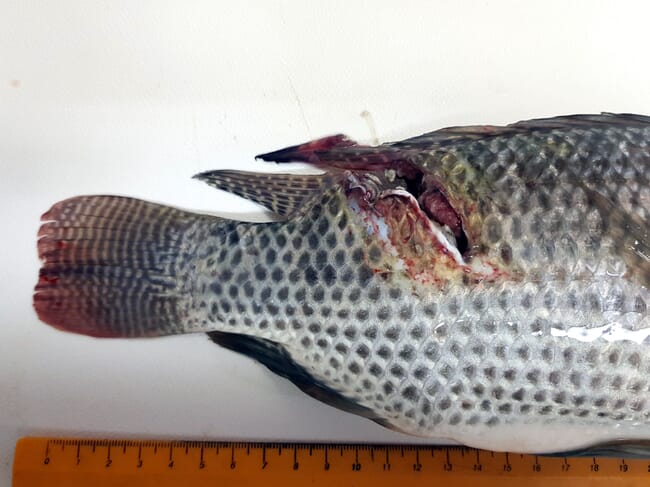
Tissue lesions from bird strikes can become a source of additional infections.
The transfer of potentially pathogenic organisms by birds and the spread from one fish population to another has been well studied. Viruses, such as that causing infectious pancreatic necrosis (IPN), viral hemorrhagic septicemia (HSV) and spring carp viraemia (SVC) are known to have been isolated from beaks or regurgitated food several hours after birds have fed on infected fish.
Of particular importance are aquatic avian species that serve as final hosts of common metazoan endoparasites of freshwater fish, in particular trematodes (class: Digenea), tapeworms (class: Cestoda) and roundworms (phylum: Nematoda).
Digeneans or digenetic worms are a subclass of flatworms of the class Trematoda. These are parasitic worms with a syncytial integument, generally equipped with two suction cups, one oral and one ventral. Adults especially parasitise the digestive tract, but can infest any organ of all classes of vertebrates, including humans.
The biological cycle of trematodes
Digenean trematodes are heteroxene (with a multi-host life cycle) flatworms, and require a mollusc as their first intermediate host.
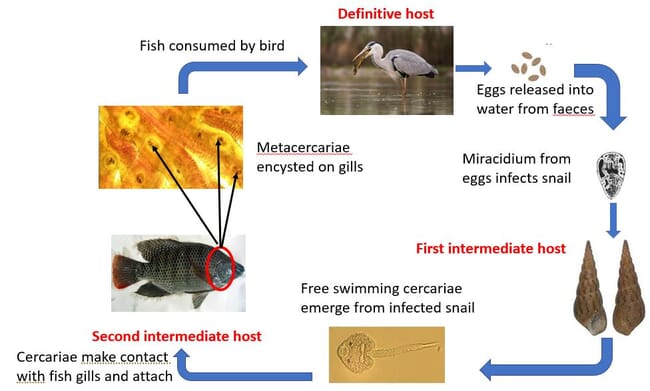
Digenean trematodes require a mollusc as their first intermediate host before infecting fish.
The severity of the fish injury depends on several factors
- The species of fish
- The size of the fish
- The severity of the infection
- The species of the parasite
- The target organ or tissue
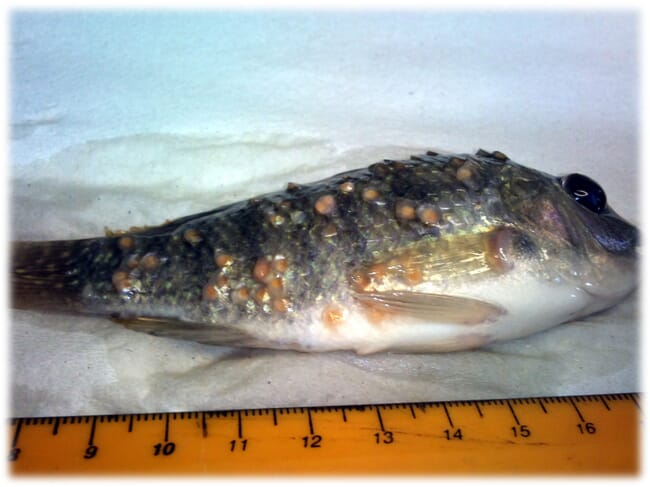
Yellow grub gets its name from the yellow worm – like larval stage encountered in the flesh immediately beneath the skin.
Centrocestus formosanus (Trematoda – Digenea)
- Affects the fish growth rate.
- Promotes proliferation of other parasites and secondary infection bacteria.
- Causes high mortality in co-infection with tilapia lake virus (TiLV).
- A drop in oxygen levels in the water is often sufficient to produce mortality of fish heavily infested with the parasite.
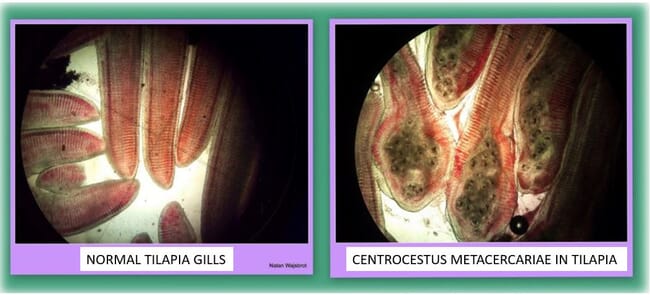
Normal tilapia gills (left) and gills with a high infestation of Centrocestus formosanus (right).
Unidentified digenean metacercariae in liver of juvenile tilapia.
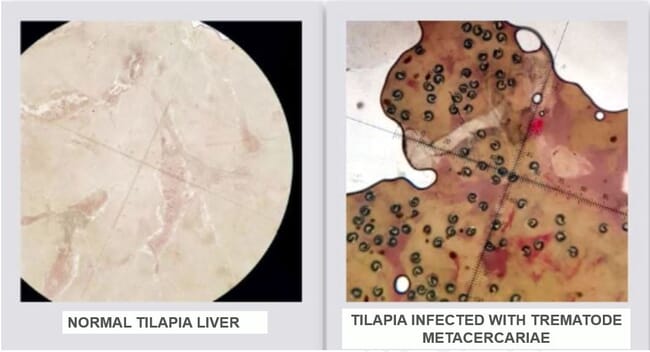

Unidentified metacercaria digenean cysts in liver of juvenile tilapias (0.4 g).
Nematodes (roundworms)
Commonly known as roundworms, Nematoda are one of the largest taxonomic phyla into which invertebrates are classified.
Nematoda are a phylum of unsegmented worms, coated with a thick cuticle and having free or parasitic life. Contracaecum is a genus of parasitic nematodes. Within it, Anisakis along with other species are responsible for a severe human parasitosis caused by the consumption of raw fish.
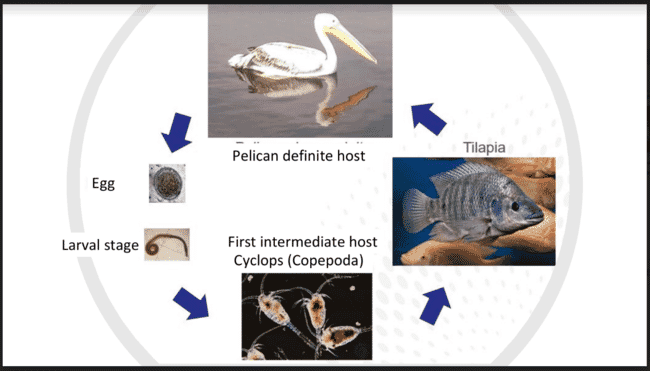
Nematoda are a phylum of unsegmented worms, and various species can cause severe parasitosis.
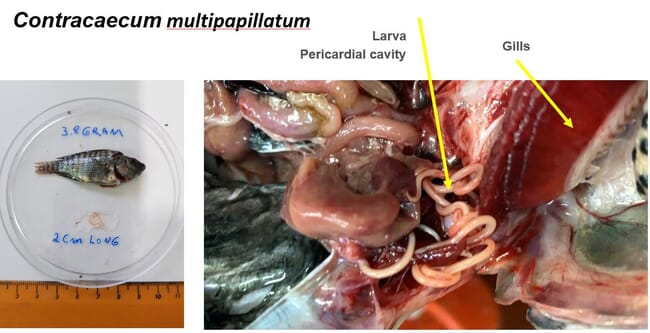
Left – tilapia juvenile infected with Contracaecum multipapillatum, Right - adult tilapia heavily infected.
Cestodes - flatworms
The Cestoda are a class of the phylum flatworms which consist of about 4,000 species, nearly all of them parasitic. They have complex biological cycles involving several hosts, including humans.
They are endoparasites in the digestive tract of vertebrates and ectoparasites, with a ribbon-shaped body consisting of a series of segments called proglottids. They have no digestive system.
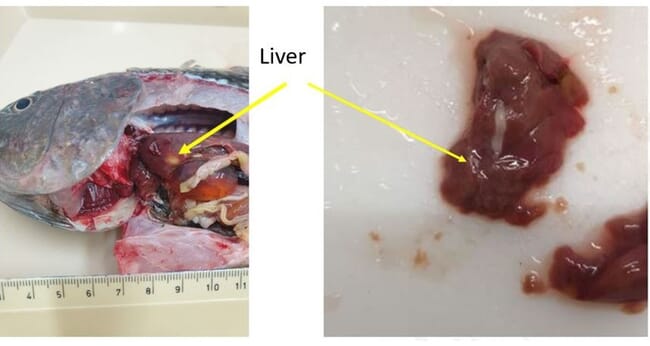
Larvae (metacestodes) of Amirthalingamia macracantha in the liver of tilapia.
Prevention methods to reduce problems caused by piscivorous birds
- Elimination. Shooting these unwelcome avian visitors of the fish ponds is both impractical and often illegal, as many wild bird species are protected by law in most Western countries.
- Bird-repelling devices. A large number of visual and audio deterrents, sometimes in combination, have been tested with mixed success. Audio deterrents include loud noises (gunshots, buzzing, automatic gas cannons, fireworks), recorded human voices, and distress or alarm calls. Certain types of noise, such as those caused by passing vehicles, have proven ineffective in reducing the number of birds. Use of loud noise repellers is not recommended if the site is close to a human habitat or if there are livestock or game animals in the vicinity. A combination of deterrence techniques is generally more effective than relying on a single strategy.
- Reducing vulnerability to attack by piscivorous birds. The most practical one is the construction of physical barriers. It has been shown that the complete enclosure of some aquaculture facilities by nets or meshes is perhaps the most effective method of preventing predation by all types of piscivorous birds.
- Harassment patrols. Harassment patrols by persons on foot or in vehicles are widely used for frightening birds at aquaculture facilities, particularly larger facilities. Such patrols typically involve the use of pyrotechnic devices. The effectiveness of the technique is largely related to the fear response birds have to human presence. However, this technique can become highly labour intensive because of the need for patrols throughout the day and night. For this reason, human effigies, automatic exploders and other devices are needed to supplement these patrols when personnel cannot be present.
Prevention treatments to reduce the number of snails (intermediated host) in ponds
- Chemical treatment: copper sulphate 25 ppm for 72 hours, to be rinsed out by thorough water change before introducing the fish.
- Regular weed control performed manually or with herbicides.
- Mechanical treatment: extracting the mud accumulated on the bottom of the ponds.
- Biological control: Use of molluscophagous fish, such as black carp (Mylopharyngodon piceus) or crustaceans, such as giant river prawns (Macrobrachium rosenbergii).
Preventive treatments to reduce the number of copepods (intermediated host) in earth ponds:
- Chemical treatment: Naled-Bromex – in many countries organic phosphates are not allowed for farming food fish.
- Dimilin (diflubenzuron)
- Biological control: use of fish that feed on zooplankton, such as bighead carp (Hypophthalmichthys nobilis).
In conclusion, several preventative and ameliorative measures are available to fisheries managers and fish farmers for reducing problems associated with birds. However, few options other than the complete enclosure of stock are likely to be completely effective, and a combination of strategies is likely to be superior to reliance on any single measure. The cost-effectiveness of any measures should be carefully considered.
I thank Dr Angelo Colorni for his critical suggestions while writing this article.




